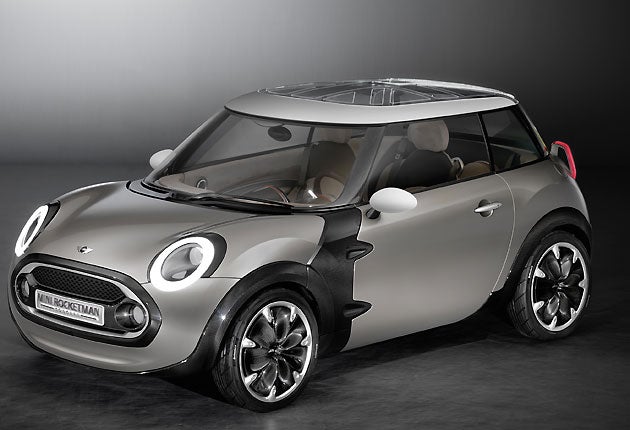Mini Rocketman – that's more like it

Your support helps us to tell the story
From reproductive rights to climate change to Big Tech, The Independent is on the ground when the story is developing. Whether it's investigating the financials of Elon Musk's pro-Trump PAC or producing our latest documentary, 'The A Word', which shines a light on the American women fighting for reproductive rights, we know how important it is to parse out the facts from the messaging.
At such a critical moment in US history, we need reporters on the ground. Your donation allows us to keep sending journalists to speak to both sides of the story.
The Independent is trusted by Americans across the entire political spectrum. And unlike many other quality news outlets, we choose not to lock Americans out of our reporting and analysis with paywalls. We believe quality journalism should be available to everyone, paid for by those who can afford it.
Your support makes all the difference.At next week's Geneva Motor Show, BMW will unveil a new concept car, the tiny Mini Rocketman, a “3+1” (passenger) design that is just three metres in length.
There's no indication yet whether the Rocketman, or something like it, will eventually make it into production, but the very fact that BMW is clearly thinking about vehicles to carry the Mini badge that are smaller than today's models is highly significant. The 2001 BMW Mini, which replaced the 1959 model, has been highly successful but subsequent developments such as the Clubman estate and in particular the big Mini Countryman crossover, have taken the Mini badge further and further away from its traditional association with small cars for mainly urban use.
Now, the Rocketman concept suggests a return to the Mini's roots – it is scarcely any longer than the 1959 car – but with new features such as extra-large side doors and a split tailgate. The 3+1 seating layout seems to be similar to that featured in Toyota's iQ, with generous space for the driver and front seat passenger when they are the only occupants, with the possibility for the front passenger to give up a little legroom in order to accommodate a rear seat passenger comfortably, and the “+1” referring to the rear seat behind the driver that offers less leg-room.
The styling is familiar post-2001 Mini, so BMW hasn't used the Rocketman to explore the difficult and increasingly pressing task of how to advance an essentially retro design idiom, but the shift to a smaller package and a lot of detail innovation has kept things looking fresh.
Join our commenting forum
Join thought-provoking conversations, follow other Independent readers and see their replies
Comments